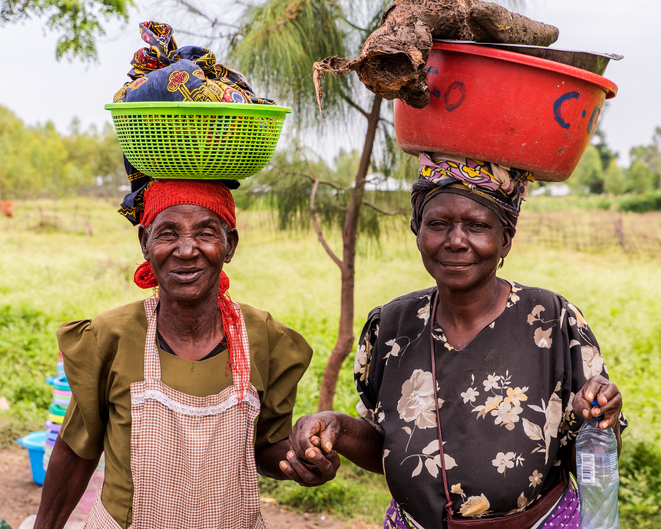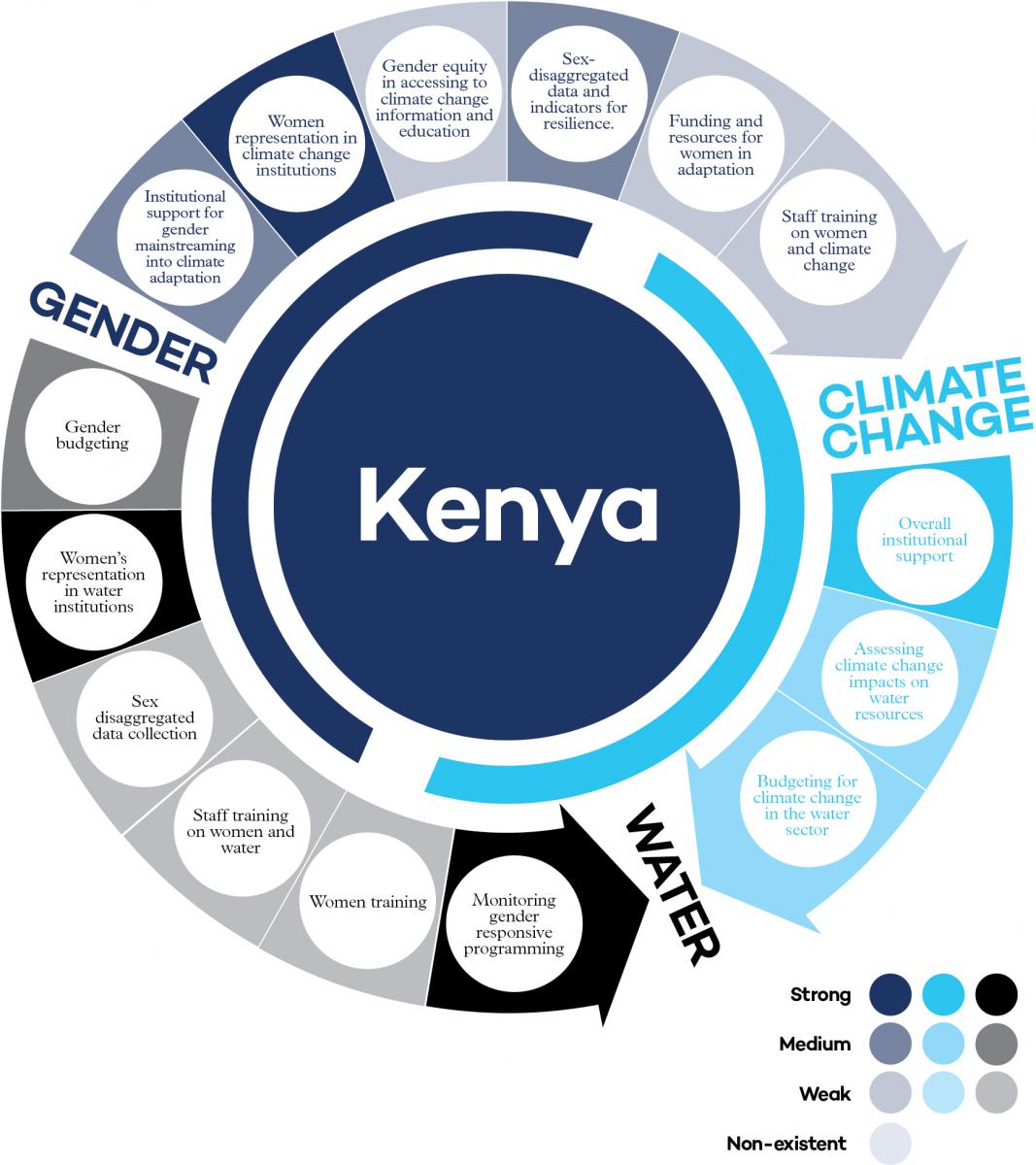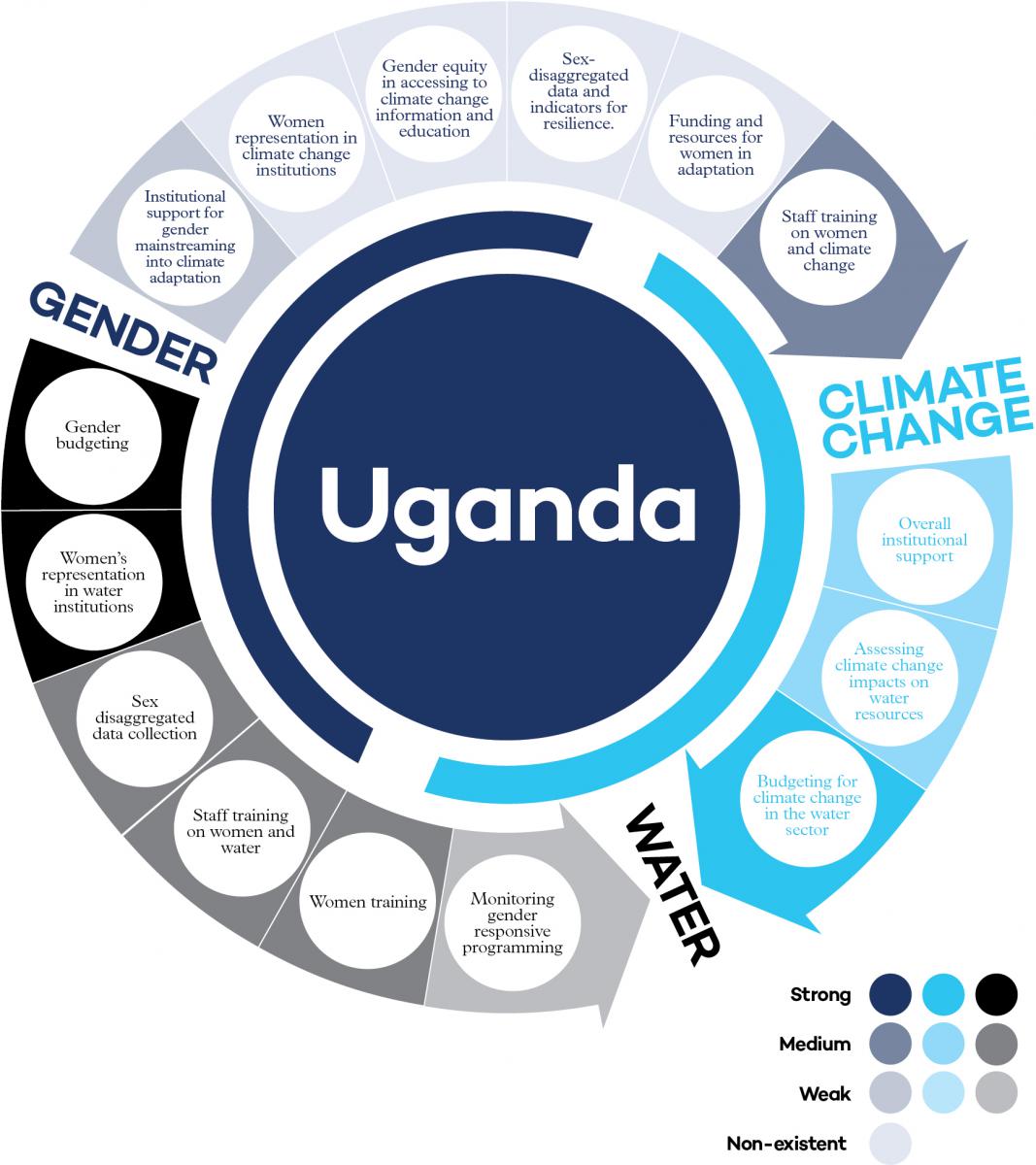Adaptive and Inclusive Watershed Management in East Africa
Improving understanding and capacity to incorporate ecosystem management, gender responsiveness and climate adaptation into watershed management efforts.
Climate change is affecting water systems around the globe, including in countries in East Africa such as Uganda and Kenya, with the degradation of wetlands, changing rainfall patterns, increased incidents of extreme weather, and deteriorating water quality and quantity.
This, in turn, has created urgent climate adaptation needs to maintain food security and human health, along with the need to reconcile countries’ rapid population growth with their economic development goals. In addition, women—the main users of water for household and small-scale agriculture—are often excluded from decision making around water on all levels.
Incorporating climate change and gender considerations into planning, budgeting and monitoring in the water sector can help systematically reduce some of these challenges. This is what we call adaptive and inclusive watershed management.

The first stage of this project focused on improving understanding and capacity to incorporate ecosystem management, gender responsiveness and climate adaptation into the adaptive watershed (TAW) management efforts. You can read a quick commentary about that process here.
IISD is currently exploring how well Uganda and Kenya are incorporating key elements of adaptive and inclusive watershed management practices through their policies, planning and institutional systems. Mainstreaming of gender and climate adaptation considerations are considered in the context of government departmental structures, plans, policy documents, implementation guidelines and monitoring systems. Both countries have identified water management, gender equity and climate change adaptation as priorities and are working actively towards ensuring effective methods in these areas.
The summary graphics (below), demonstrate specific elements that connect the three aspects of adaptive and inclusive watershed management in the two countries studied. Our assessment shows that both countries have both strengths and weaknesses when it comes to planning, implementing and monitoring key elements of such integrated management efforts.


Latest
You might also be interested in
The Adaptive Watershed: Training for watershed-based adaptation and management
When it comes to managing our watersheds in a way that is integrated and adaptive, practicioners have always encountered difficulties with implementation. It can be challenging to ensure a holistic approach that includes ecosystem, watershed, and adaptive management. This is why IISD's Water Program is facilitiating the process.
Adaptive and Inclusive Watershed Management: Assessing policy and institutional support in Uganda
This report looks at how Uganda’s various institutions and policies incorporate climate change and gender considerations into planning, budgeting and monitoring in the water sector.
Adaptive and Inclusive Watershed Management: Assessing policy and institutional support in Kenya
This report explores existing institutional linkages between gender, water and climate change in Kenya.
Trade and Climate Change
IISD project on trade and climate change


